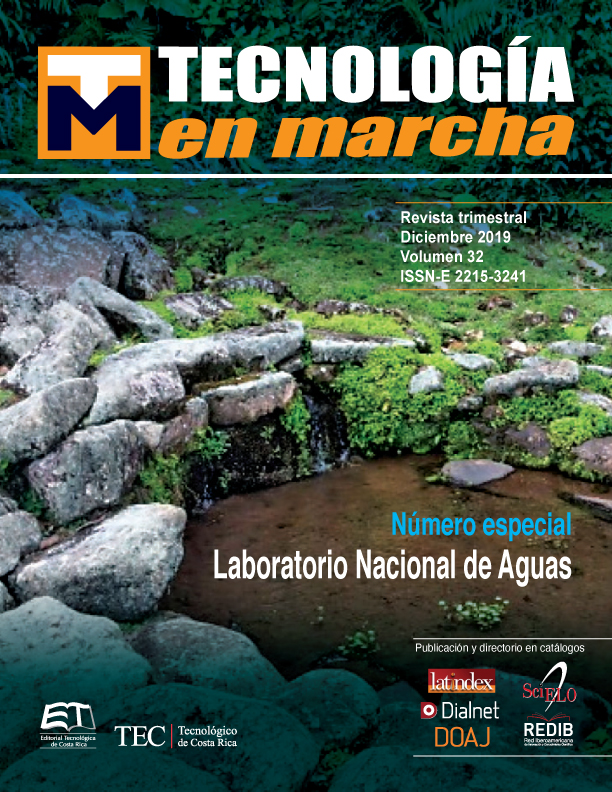Drinking-water and sanitation in Educational Institutions in Costa Rica 2017
Main Article Content
Abstract
The present study aims for estimating drinking-water coverage and sanitation within the educational institutions in Costa Rica in 2017, in order to establish the baseline and goals for the 2030 Agenda within the framework of the Sustainable Development Goals. The methodology consisted in water data analysis from different sources: Ministry of Public Education (“Infraestructura en las Escuelas y Colegios Públicos del 2017”); microbiological water quality and free residual chlorine concentrations were obtained from the Drinking-water Quality Control and Surveillance Programme of the National Water Laboratory, within the framework of the Bandera Azul Ecológica programme. A comparison was made between the 2016-2017 data and the initial data recollected in 2004. Subsequently, the drinking-water ladder (created by the World Health Organization) was applied using 2017 data and information from the Ministry of Public Health. Percentages of schools that presented sewage system, septic tank, and latrines were obtained using information from the Ministry of Public Health regarding sanitation or excreta disposal. Likewise, the use of toilets and washbasin in good conditions was quantified. The results show that rural aqueducts supplied drinking-water to 52,9 % of the educational institutions, 5,6 % was supplied by municipalities, 2,2 % by cooperatives and/or enterprises, 21,5 % by AyA, 6,7 % by private wells, 0,9 % directly by rivers, 0,3 by other sources, and 0,8 did not answer the survey. Regarding microbiological water quality, in 2016 the drinking-water coverage was 94,2 %, whereas, in 2017 the coverage was 95,9 %. Drinking-water coverage was increased 18,5 % since 2004 to 2017. An estimation of the drinking-water ladder shows that 86,0 % of the educational institutions are classified as “Advanced service”, 4,1 % as “Basic service”, 6,7 % “Limited service”, and 11,1 % “No service”. As regards sanitation, 6,6 % of the educational institutions counted with sewage system, 89,5 % with septic tank, 1,6 % with well, 0,2 % with other mechanism, 0,2 % counted with none, and 1,7 % did not answer the survey. The use of toilets and washbasin in good conditions was 87,8 % and 90,1 % respectively. Lastly, this study established goals regarding potable drinking-water coverage within educational institutions for 2022-2030, and underlined that importance of eliminating the use of latrine and improving the conditions of toilets and washbasin in schools.
Article Details
Los autores conservan los derechos de autor y ceden a la revista el derecho de la primera publicación y pueda editarlo, reproducirlo, distribuirlo, exhibirlo y comunicarlo en el país y en el extranjero mediante medios impresos y electrónicos. Asimismo, asumen el compromiso sobre cualquier litigio o reclamación relacionada con derechos de propiedad intelectual, exonerando de responsabilidad a la Editorial Tecnológica de Costa Rica. Además, se establece que los autores pueden realizar otros acuerdos contractuales independientes y adicionales para la distribución no exclusiva de la versión del artículo publicado en esta revista (p. ej., incluirlo en un repositorio institucional o publicarlo en un libro) siempre que indiquen claramente que el trabajo se publicó por primera vez en esta revista.

